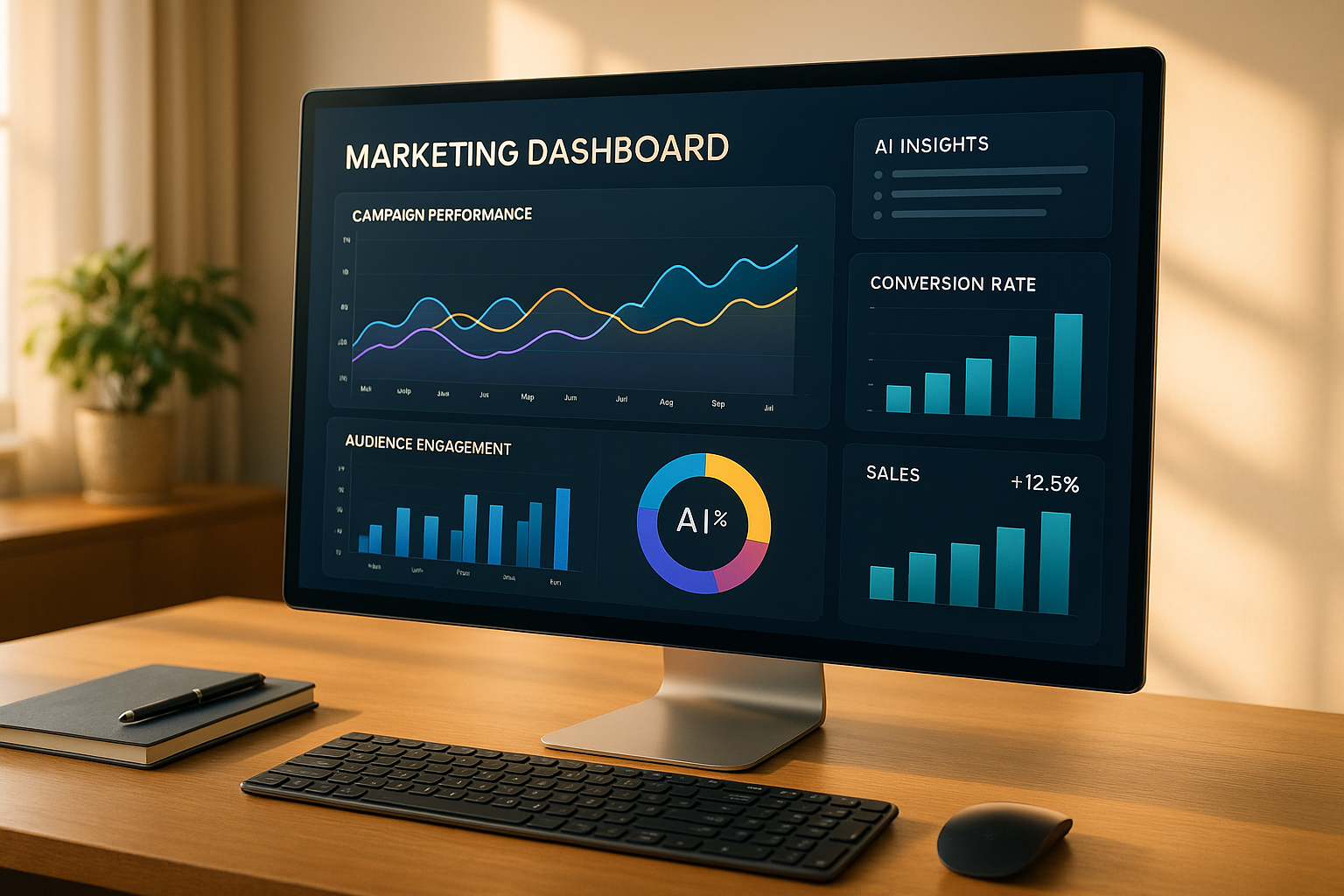Key Features:
- Real-Time Monitoring: Track campaigns instantly and make adjustments on the spot.
- Predictive Analytics: Forecast outcomes, identify trends, and anticipate customer actions.
- Multi-Platform Integration: Combine data from social media, email, CRM, and more for unified reporting.
Top Dashboards:
- Databox: Real-time performance tracking.
- Klipfolio: Visualizes customer journeys.
- Tableau CRM: Links campaigns to results, ideal for Salesforce users.
- Whatagraph: Focuses on content analytics.
- Mixpanel: Deep dive into user behavior.
Quick Comparison:
| Tool | Best For | Key Feature |
|---|---|---|
| Databox | Performance tracking | Real-time KPI monitoring |
| Klipfolio | Customer journey insights | Clear visualizations |
| Tableau CRM | Marketing attribution | Salesforce integration |
| Whatagraph | Content analytics | User-friendly design |
| Mixpanel | User behavior analysis | Advanced segmentation tools |
Next Steps:
- Identify your data sources (e.g., CRM, email tools).
- Match dashboard features to your goals (e.g., ROI tracking, content performance).
- Start with basic plans and scale as needed.
AI dashboards simplify marketing by turning data into actionable insights. Choose the right one to save time, optimize strategies, and boost results.
Best Dashboards for Marketing Analysis and Reporting in 2025
Must-Have AI Dashboard Features
To truly deliver actionable insights and boost campaign performance, modern AI marketing dashboards need to come equipped with specific capabilities. These tools are designed to help marketing teams make smarter, faster decisions in 2025 and beyond. Here are the key features that make an AI dashboard indispensable.
Live Campaign Monitoring
Keeping tabs on campaigns in real time is no longer a luxury - it’s a necessity. AI dashboards now process data instantly after user interactions, giving marketers the ability to analyze performance and make adjustments without delay. Here’s what real-time tracking enables:
- Spotting performance issues within minutes
- Tweaking bid strategies for paid ads on the spot
- Monitoring ROI as it happens
With instant alerts, teams can pivot quickly to fix underperforming campaigns and ensure resources are being used effectively. But real-time insights are just the beginning - predictive analytics takes things to the next level.
Future Trend Analysis
Predictive analytics has completely reshaped how marketers strategize. Using machine learning, modern dashboards can:
- Forecast campaign outcomes based on historical data
- Identify the best times to publish content
- Anticipate customer actions
- Highlight upcoming market shifts
These insights help marketers stay ahead of the curve, turning data into a competitive advantage. By sifting through massive datasets, AI dashboards can uncover opportunities that might otherwise go unnoticed.
But none of this would be possible without seamless data integration.
Multi-Platform Data Integration
The true power of an AI marketing dashboard lies in its ability to bring data from multiple platforms together. This integration offers several advantages:
- Cross-Channel Attribution: Understand how customers interact across different touchpoints.
- Unified Reporting: Get a complete picture of performance in one place.
- Automated Data Sync: Reduce errors from manual updates.
- Pattern Recognition: Discover trends and connections across platforms.
The best dashboards integrate effortlessly with tools like:
- Social media platforms
- Email marketing software
- Website analytics tools
- CRM systems
- E-commerce platforms
- Advertising networks
By consolidating data, these dashboards provide a clear view of the customer journey, helping teams allocate resources more effectively and see how different efforts combine to drive results.
To make the most of these features, it’s important to choose a dashboard that not only offers powerful analytics but also fits seamlessly into your team’s workflow. The best tools strike a balance between advanced capabilities and user-friendly design, ensuring that even non-technical team members can access and act on insights with ease.
5 Leading AI Marketing Dashboards
Here’s a look at five AI-powered dashboards that specialize in tracking content performance, user behavior, and multi-platform data. These tools cater to various marketing analytics needs, offering features that can help you make data-driven decisions.
Databox: Real-Time Performance Insights
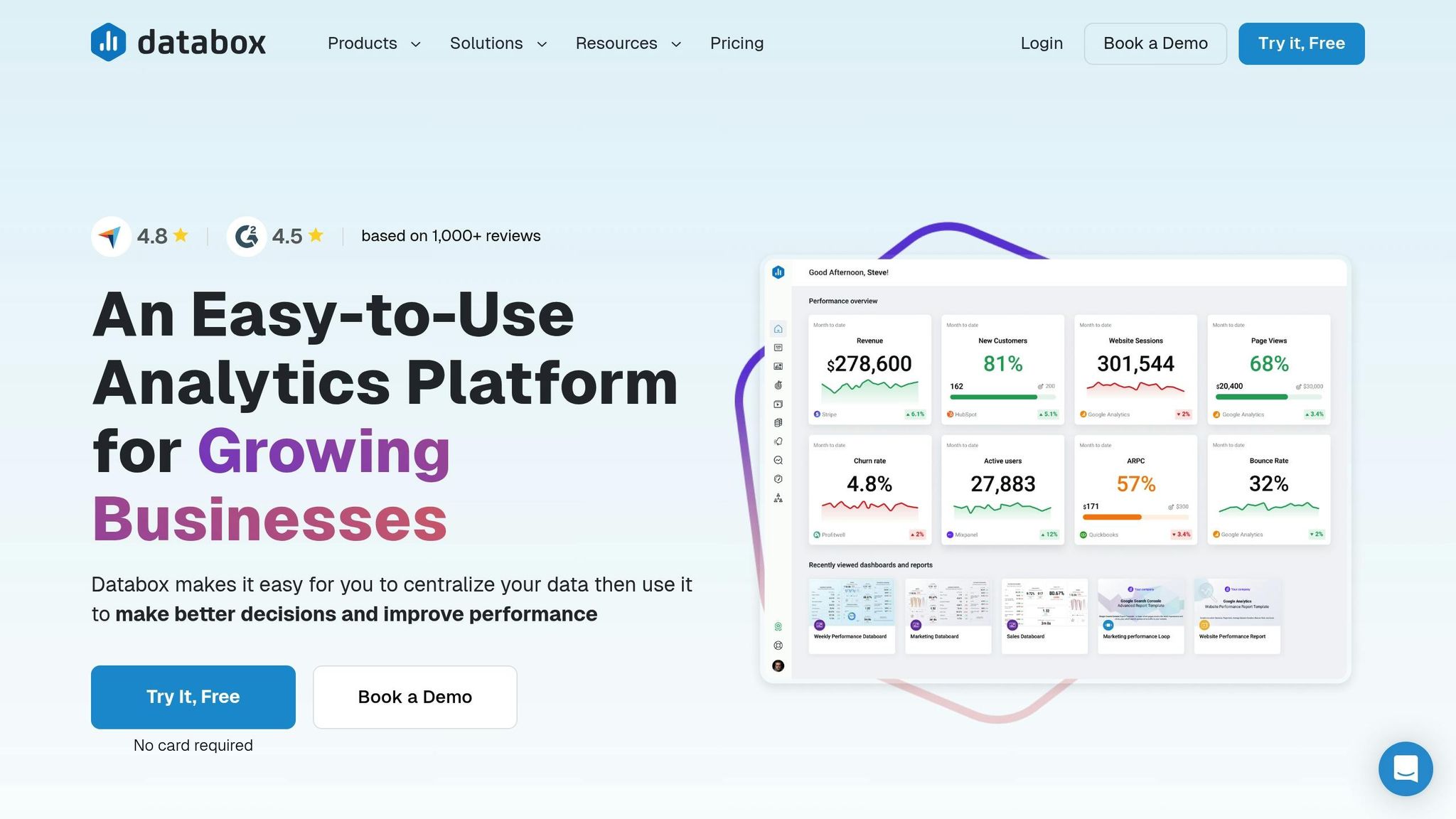
Databox pulls together data from multiple marketing tools into a single, easy-to-read view. It allows you to monitor key performance indicators (KPIs) in real time, making it a go-to for quick performance tracking.
Klipfolio: Visualizing the Customer Journey
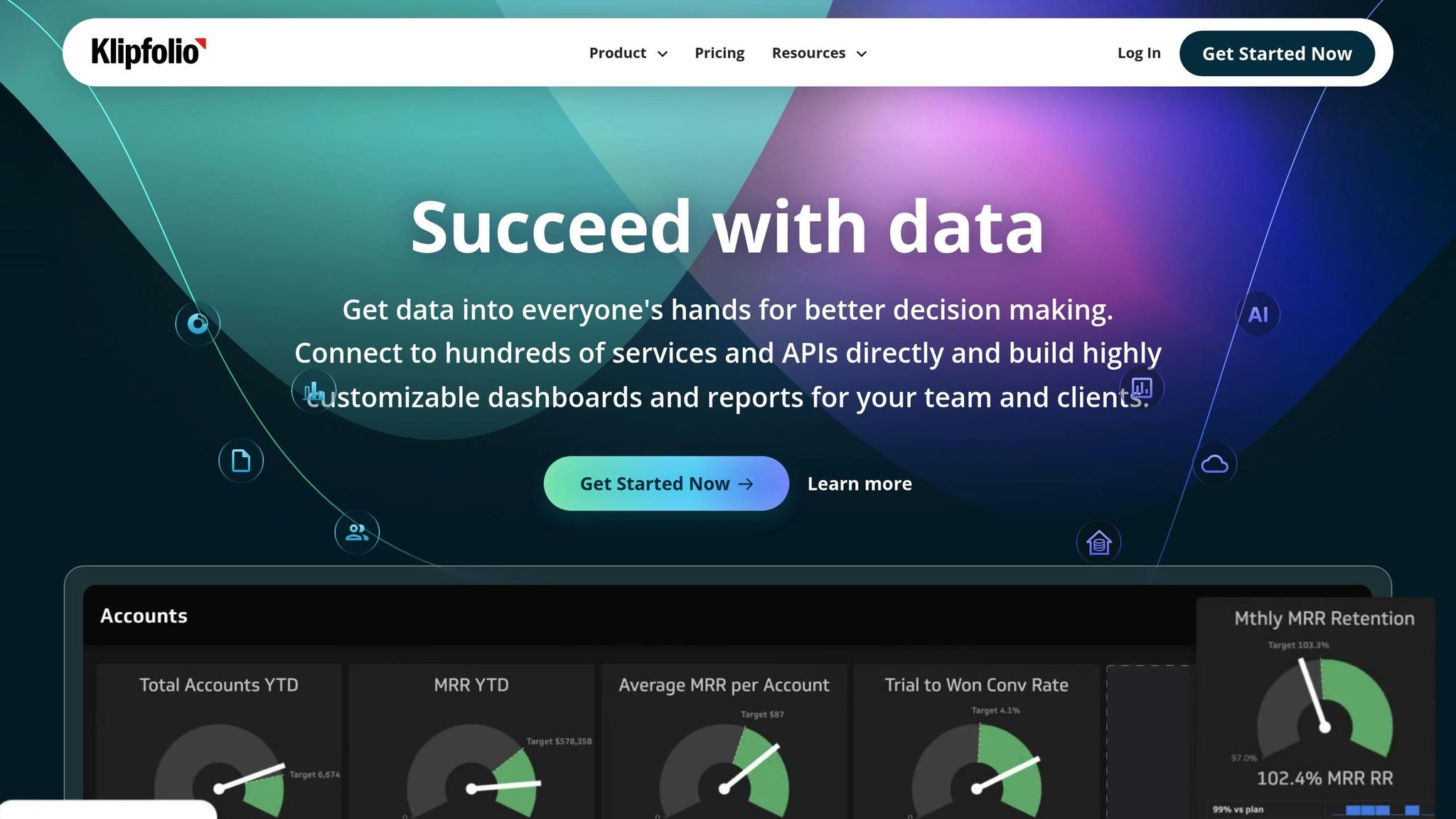
Klipfolio excels at mapping out the customer journey. By combining data from multiple sources, it delivers clear visualizations that help you understand how customers interact with your brand across channels.
Tableau CRM: Connecting Efforts to Results
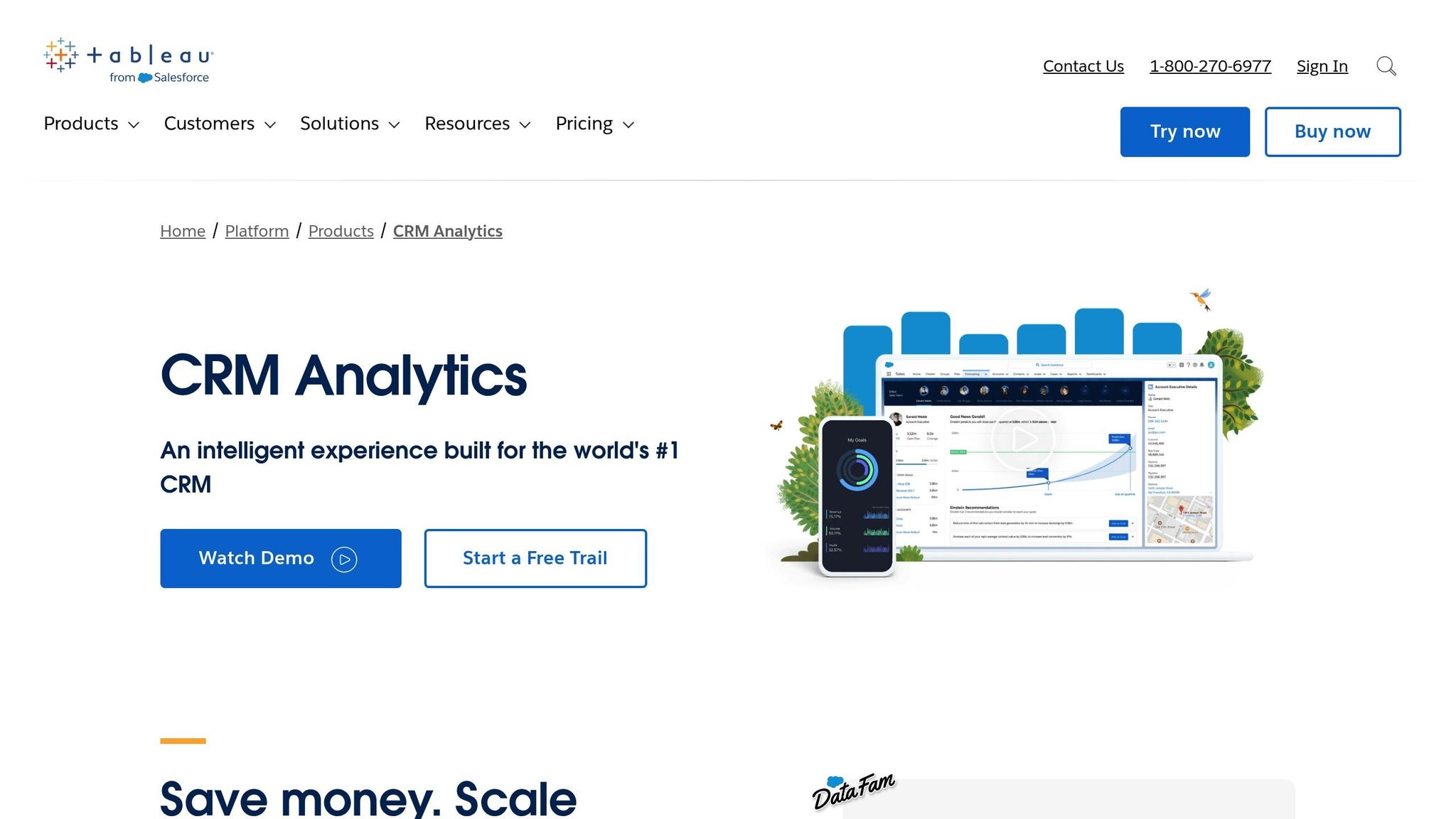
Tableau CRM focuses on marketing attribution, linking your campaigns to measurable outcomes. Its seamless integration with Salesforce makes it particularly useful for teams looking to track channel contributions and optimize their strategy.
Whatagraph: Spotlighting Content Success
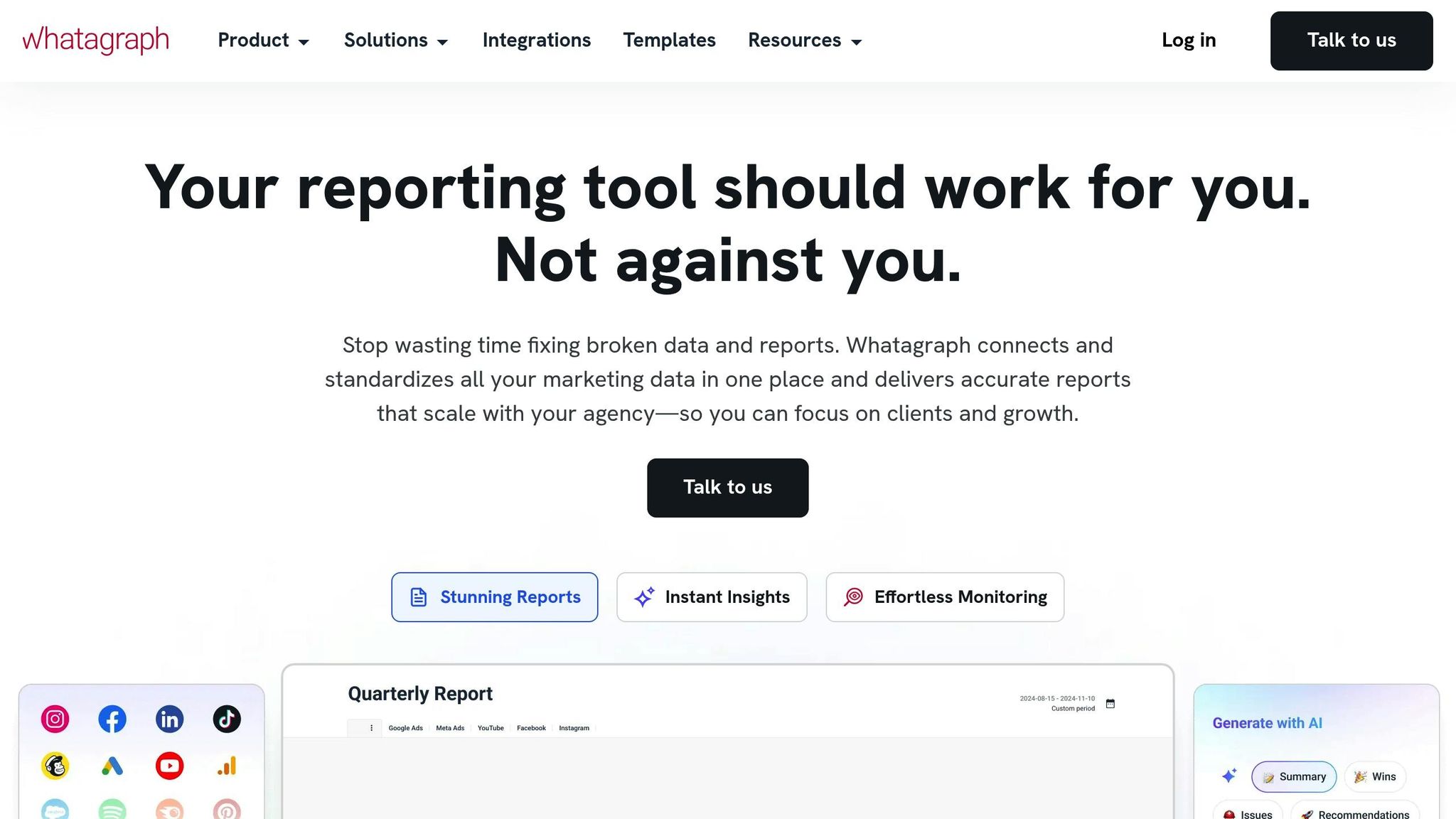
Whatagraph simplifies content performance tracking with its user-friendly design. It provides detailed analytics across platforms, highlighting which pieces of content are resonating most with your audience.
Mixpanel: Understanding User Behavior
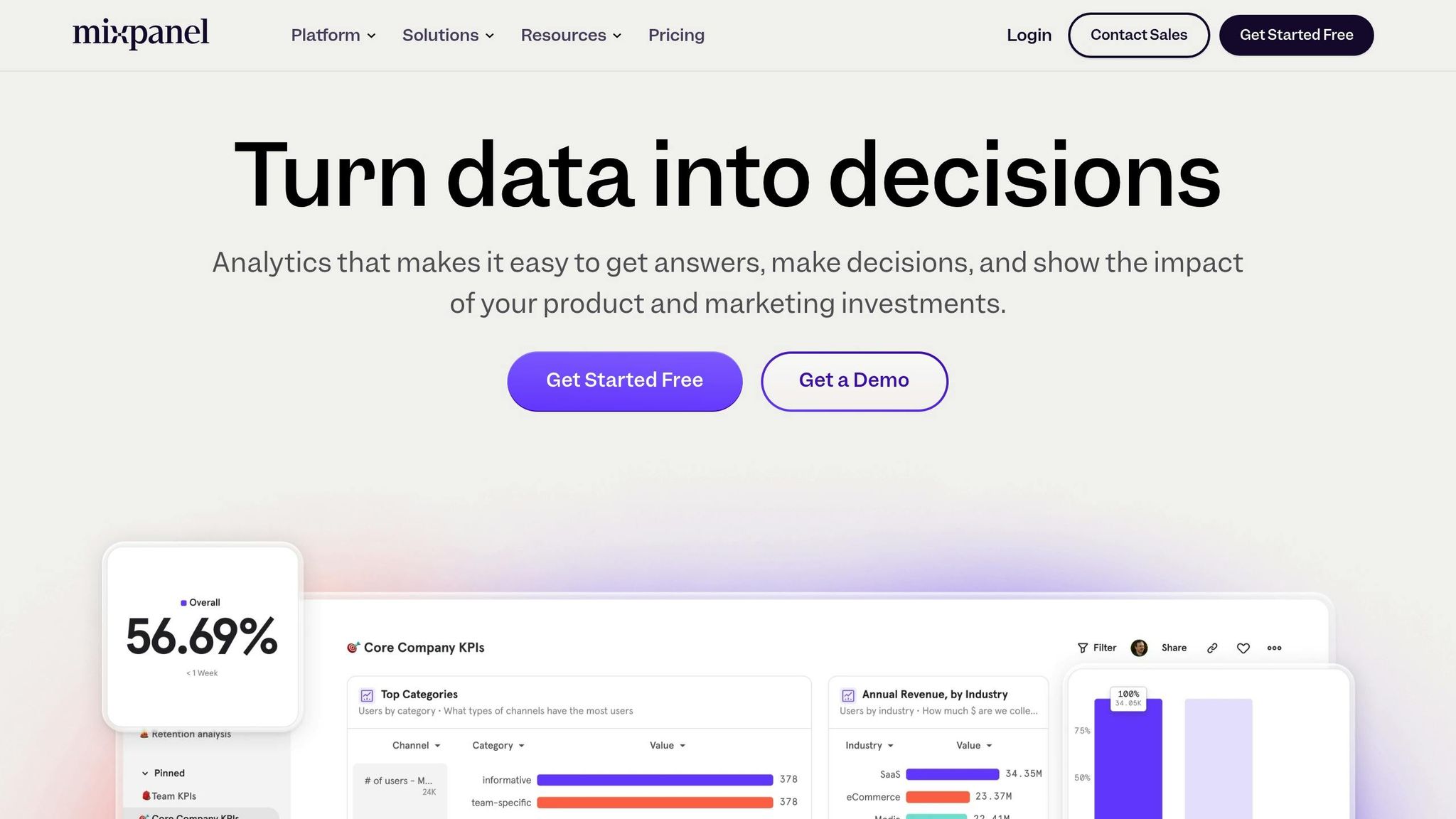
Mixpanel dives deep into user interactions, offering insights into audience behavior. With its robust analysis tools, you can segment users and fine-tune your targeting strategies for better results.
Each of these dashboards addresses unique marketing analytics challenges. Exploring their demos can help you decide which one best aligns with your goals.
sbb-itb-5ab00cc
Selecting Your AI Marketing Dashboard
Now that we've covered key dashboard features and top tools, it's time to zero in on selecting the right dashboard for your marketing strategy.
Data Source Requirements
Start by identifying the platforms and tools you already use to collect marketing data. These might include:
- Marketing automation platforms
- Social media management tools
- CRM systems
- Email marketing software
- Website analytics tools
- Paid advertising platforms
Knowing your data sources ensures the dashboard you choose can integrate seamlessly with your existing tools.
Matching Features to Goals
Next, align your marketing objectives with the features your dashboard must have. Here's a quick guide:
| Marketing Goal | Essential Dashboard Features |
|---|---|
| Campaign ROI Tracking | Multi-channel attribution modeling, revenue tracking, cost analysis |
| Content Performance | Engagement metrics, audience segmentation, content lifecycle analysis |
| Lead Generation | Lead scoring, funnel visualization, conversion tracking |
| Customer Journey | Path analysis, touchpoint mapping, behavioral analytics |
This mapping helps ensure the dashboard delivers insights that directly support your goals.
Cost and Growth Planning
Once you've matched features to your goals, think about how much you're willing to invest now and what you'll need as your business grows. Here's how to approach it:
- Initial Implementation Costs: Factor in subscription fees, setup charges, and any training expenses.
- Scalability Requirements: Look at pricing models, data volume limits, and costs for adding users or features as your needs expand.
- ROI Considerations: Estimate the value you'll gain - like time saved, faster decision-making, and improved efficiency - to justify your investment.
Many AI marketing dashboards offer tiered pricing. Starting with the basics and scaling up as your needs grow can help you manage costs while ensuring your team has the tools they need.
Getting Results from Your Dashboard
Setting Up KPI Tracking
To effectively drive revenue, start by establishing baseline KPIs across your key channels. Here’s a breakdown to help you get started:
| Metric Category | Key Performance Indicators | Tracking Frequency |
|---|---|---|
| Conversion | Cost per acquisition, Sales qualified leads, Conversion rate | Daily |
| Engagement | Time on page, Social shares, Email click-through rates | Weekly |
| Revenue | Customer lifetime value, Return on ad spend, Revenue per channel | Monthly |
Set up your dashboard to track these metrics consistently. Use alerts to flag unusual activity so you can respond quickly. Once everything is in place, make sure your team knows how to use these insights to make informed decisions.
Team Dashboard Training
Getting your team comfortable with the dashboard is crucial. Here’s how to ensure they’re ready to use it effectively:
-
Initial Onboarding: Start with hands-on sessions that cover the basics:
- Navigating the dashboard
- Interpreting insights
- Exporting reports
- Setting up alerts
-
Advanced Feature Training: Dive into more sophisticated tools and techniques:
- Predictive analytics
- Custom segmentation
- Attribution modeling
- Automated reporting
-
Continuous Learning: Keep the team sharp with regular sessions where they can:
- Share findings and best practices
- Explore new dashboard features
- Analyze real campaign data together
- Practice making data-driven decisions
Made with ChatGPT Tools Directory
To boost your dashboard’s capabilities, explore the Made with ChatGPT directory. It’s packed with AI-powered tools designed to enhance analytics and performance tracking.
For example, Apex Digital integrated Search Atlas’s platform in Q3 2024, resulting in a 45% increase in organic traffic and an average keyword ranking improvement of 20 positions for their client, GreenTech Solutions. This integration also led to a 30% rise in online leads and a 25% jump in website conversion rates[1].
Use the directory’s filtering system to find tools tailored to your needs, whether you’re looking for advanced data analysis, API integrations, automated outreach, or content marketing solutions. These tools can take your performance tracking to the next level.
Conclusion
AI-powered marketing dashboards are shaping the way businesses make data-driven decisions in 2025. These platforms offer real-time analytics and detailed insights into customer behavior, helping marketers improve campaign performance and achieve their goals.
When selecting a dashboard, focus on aligning its features with your specific marketing objectives - whether that's improving conversion rates, analyzing customer journeys, or tracking content performance. The right tool can make all the difference in achieving measurable results.
For additional support, the Made with ChatGPT directory provides a selection of AI analytics tools designed to enhance campaign tracking and boost your strategy. By incorporating these tools, you can gain a clearer picture of what's working and where to improve.
Organizations that succeed with AI dashboards often combine them with team training and consistent KPI monitoring. Many companies using tools from the Made with ChatGPT directory have reported measurable improvements in their key metrics, thanks to better data analysis and optimization.
In 2025, using AI dashboards isn’t just about gaining an edge - it’s quickly becoming essential for staying competitive in the ever-evolving digital landscape. By embracing these tools and their capabilities, marketing teams can make smarter decisions and deliver stronger results across all channels.
FAQs
AI dashboards are game-changers for marketing strategies, offering real-time insights that let marketers track campaign performance as it happens. With this information at their fingertips, they can pinpoint what’s effective, tackle problems immediately, and tweak strategies to get the best possible outcomes.
Beyond monitoring, these dashboards tap into predictive analytics to anticipate future trends and customer behaviors. By examining past data and patterns, they empower businesses to make smarter, data-driven choices, ensuring campaigns are not only responsive but also ahead of the curve in achieving their objectives.
When selecting an AI-powered marketing dashboard, it's essential to look for features that truly meet your needs. Start with real-time tracking - this ensures you're always up to date on your campaign performance. Next, check for customization options so you can tailor the dashboard to focus on the metrics that matter most to your goals. And don't forget about integration - it should work seamlessly with the tools you're already using.
You’ll also want to see if the platform includes advanced AI capabilities, like predictive analytics to forecast trends or automated reporting to save time on routine tasks. Finally, think about scalability and cost. Make sure the dashboard not only fits your current budget but can also adapt as your business grows.
Integrating data from various platforms gives marketers a clear and unified view of their campaigns. By pulling insights from social media, email, website analytics, and other sources into a single dashboard, they can spot trends, measure ROI, and make decisions backed by real-time data.
This unified approach allows marketers to craft more precise strategies and fine-tune campaigns based on a well-rounded understanding of customer behavior. Plus, it cuts down on the time wasted jumping between tools, making it easier to adapt quickly and work more efficiently.

